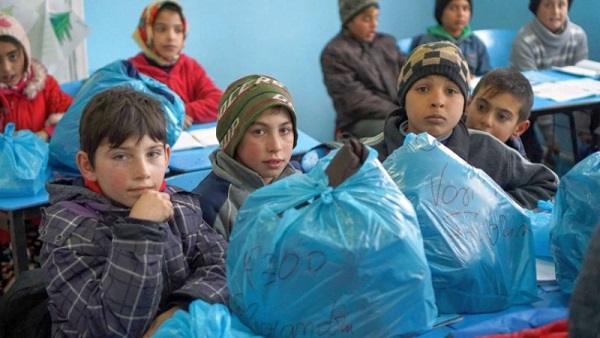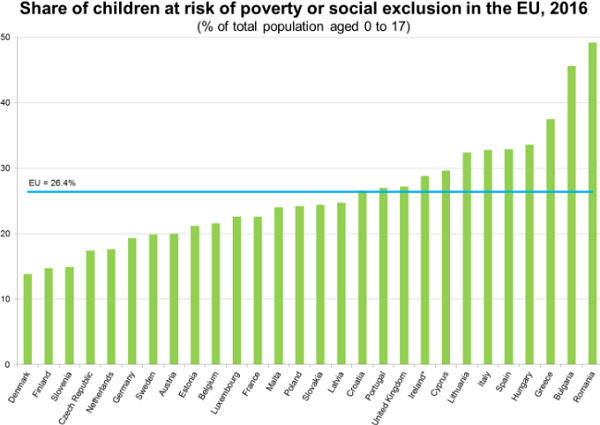 There are 1.8 million children in Romania at risk of poverty and social exclusion, according to the Eurostat statistics.
There are 1.8 million children in Romania at risk of poverty and social exclusion, according to the Eurostat statistics.
As a percentage, about half of the minor children were in this situation (49.2% of the total number of people between 0-18 years of age), which is almost double the European average – 26.4%.
In absolute terms, the number has increased – from 1.859 million children in 2010 to 1.880 million in 2016.
Romania and Bulgaria stand out in the region, where the other states have reduced their percentage of children at risk of poverty. In our country, although the last few years have seen economic growth rates well above the other member states, the proportion increased – from 48.1% in 2010 to 49.2% in 2016.
It should be noted that the most significant increase occurred in 2015 (when the proportion dropped to the lowest level since the EU accession – 46.8% of children being at risk of poverty), to 49.2% last year.
 Comparison with Bulgaria
Comparison with Bulgaria
Both countries started in 2007 from record rates – 60.8% in Bulgaria and 51.8 in Romania.
Bulgaria has constantly evolved over the past five years, from a rate of 52.3% in 2012 to 43.7% in 2015. Last year, the number of children exposed to poverty and social exclusion increased also on the south side of the Danube, to 45.6 %.
In Poland, a similar country to Romania, the problem of child poverty has never reached such levels, as the rate was 37.1% in the moment of the EU accession and 24.2 last year.
In absolute terms, while our country has 1.8 million children threatened by poverty (in a resident population of 19.6 million people), Poland had 1.6 million such children (in a population close to 38 million inhabitants).
The largest decreases in the rate of children exposed to poverty and social exclusion were otherwise recorded in Poland between 2010 and 2016: by 6.6 percentage points.
It is followed, according to Eurostat, by:
- Ireland – a 5.3 percentage points decrease
- Hungary – a 5.1 percentage points decrease
- Bulgaria – a 4.2 percentage points decrease
- Lithuania – a 3.4 percentage points decrease
The most significant increases:
- Greece – 8, 8 percentage points (from 28.7% in 2010 to 37.5% in 2016)
- Cyprus – 7.8 percentage points
- Sweden – 5.4 percentage points increase
- Italy – 1.1 percentage points.









